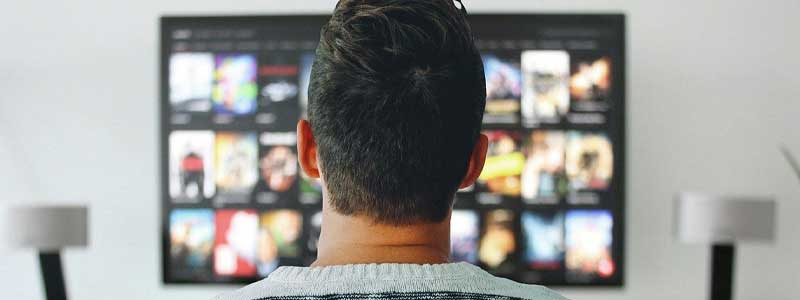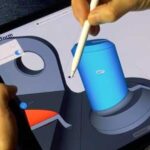Watching a movie or video on a Samsung Galaxy tablet will limit your screen space. Luckily you can connect your tablet to your TV via HDMI cable. Your device needs to support HDMI streaming to use this method. Let me take you through the requirements and steps to set up your tablet and TV.
Our Overall #1 Top Recommendation!
Affiliate links / Images from Amazon Product Advertising API
How to Connect a Samsung Galaxy Tab to TV via HDMI
Connecting your tablet to your TV via HDMI uses a USB-C to HDMI adapter.
Tablets do not have HDMI ports hence the need for an adapter. However, your device must support HDMI Alt Mode. Follow these steps to set up your devices.
- Connect the USB-C adapter to your charging port.
- Locate the HDMI port on your TV and connect one end of your HDMI cable.
- Connect the other end of the cable to the port on your adapter.
An alternative for the USB-C to HDMI adapter is a universal USB-C to HDMI cable. This cable has a USB-C connection and an HDMI connection on the other end. You can charge your device while connected to your TV on some devices.
If your device needs to charge while connected, you will need an adapter with a charging port.
If your tablet does not have a USB-C port, you need a Micro-USB to HDMI adapter. However, your device should be MHL (Mobile High-Definition Link) compatible.
If you want to view a saved media file on your TV, use this simple hack.
My method will require you to have a PC. Start by connecting your Galaxy Tab to your PC via a USB data cable. This will allow you to access your media file on your PC. Connect your PC to your TV via HDMI cable and play your file.
Cable connectivity works best for people looking to eliminate inconveniences caused by buffering and poor signal. However, the length of your cable will limit you. You can go for wireless connectivity, which we will discuss shortly.
Connect Samsung Tablet to TV Wirelessly
There are quite a few options available for you with wireless connectivity. You can use Chromecast, third-party applications, or Samsung’s inbuilt screen mirroring feature.
Although some of these options will cost you money, they provide good services. Let us look at each of them, and you will decide which one suits you best.
Follow these steps to connect your tablet to your TV.
- Go to Settings > More Networks. Alternatively, you can use the Smart View feature. Drop down the quick panel and tap on Smart View.
- Tap on Screen Mirroring and give it a few seconds.
- Your TV name should appear if both devices are connected to the same Wi-Fi router. Tap on the name to start sharing.
You must keep your TV and tablet connected to the same network for uninterrupted viewing sessions. This method allows you to adjust the volume through your tablet and have more display space. You can simply kick back with a bag of chips and enjoy your favorite show at home.
Another wireless way of connecting a Samsung tablet with a smart TV is via a Chromecast dongle. If your TV natively supports Chromecast, you do not need a dongle. A reasonable Chromecast dongle costs around $50. If you are not sure how to use this device, follow the following steps.
- Chrome cast dongles need a power source and an HDMI connection to work on an Android TV. Some dongles will have a built-in HDMI end, while others will come with an HDMI extension cable. Make sure your device is connected to your TV.
- Connect your Chromecast dongle to a power source via the USB cable. Alternatively, you can plug the USB cable into your TV’s port to power your device.
- With your TV’s remote, switch the input source until you see the Chromecast menu.
- Download and install the Chromecast app on your tablet. You can get the app from chromecast.com/setup.
- Make sure your tablet and TV are connected to the same Wi-Fi network. Open the application and select your Chromecast device from the list.
- Follow the steps provided to set up your device.
- On your tablet’s screen, you should see a code. If the code is identical to your TV, click I See The Code.
- Complete the setup by giving your device a name and password.
- If prompted, select your Wi-Fi network and input your password, and you are ready to start sharing.
Some applications like Netflix, Hulu, and HBP Now support Chromecast Natively. If your TV also supports Chromecast, you do not need a dongle to share your screen.
If the options above do not work for you, you can use third-party applications for screen mirroring. However, some applications will block screen sharing for copyright reasons. You need to make sure that your smart TV supports the DLNA streaming protocol to get started. Most Android TVs have this feature that lets you play your tablet media on your TV.
An excellent example of a third-party screen-sharing application is the LocalCast. This is a free-to-use application that allows you to mirror selected parts of your screen to your TV. It can also connect with Chromecast. A remarkable feature of LocalCast is streaming off the cloud and web pages. If you have files in the cloud, say google drive and dropbox, anyone can stream with the LocalCast application. The application comes with ads, so you will need to upgrade the version to get rid of them.
The last option is limited to YouTube only. If your tablet screen is too tiny to watch a video on YouTube or you just want a larger display, you can view the same on your smart TV. In this section, you have two options which we will cover shortly.
The first step is making sure your tablet and TV are connected to the same Wi-Fi network.
- Open your YouTube application on your tablet and click on the cast button. The first option is an automatic search. After clicking the cast button, you should see your TV name on the list or connect via TV code.
- If your TV name appears on the list, click on it to start casting.
- You can also connect your devices using the TV code. Open the Youtube app on your TV and look for the code in the application settings.
- On your tablet’s YouTube application, tap on the Cast button and select Link with TV Code.
- Enter the code on your phone to start casting.
Those are the safest methods to connect your Samsung Tablet to your TV. Cable connectivity eliminated the inconvenience caused by buffering and poor signals. On the other side, wireless connectivity gives you flexibility. You can move around with your tablet as long as you stay within range. Choose what best works for you and enjoy content on your TV. If you have a suggestion, reach out to us via the comment section.
References:
- https://www.techadvisor.com/how-to/google-android/connect-android-tv-3533870/
- https://www.pcmag.com/how-to/connect-your-android-phone-to-your-tv
- https://www.makeuseof.com/tag/how-to-use-chromecast/
As an Amazon Associate I earn from qualifying purchases. Learn more.






